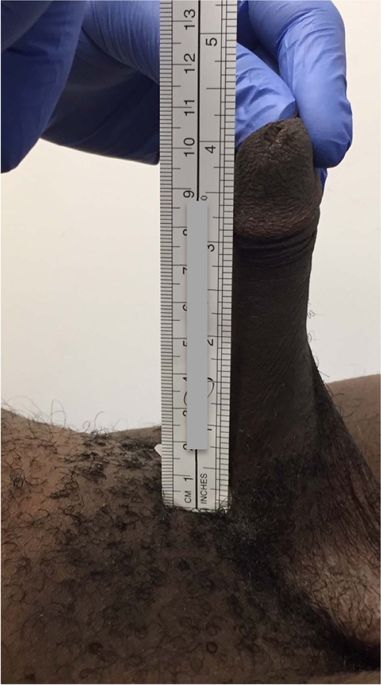International Journal of Impotence Research ( IF 2.8 ) Pub Date : 2019-04-01 , DOI: 10.1038/s41443-019-0135-x Gideon A Blecher 1 , Josip Vukina 1 , David J Ralph 1, 2

|
Penile dimensions and related dissatisfaction, may have significant impact upon patients whom undergo andrological surgeries. Whilst penile dimension assessment is performed as part of the andrological evaluation, little is known regarding the surgeons’ opinions nor contemporary practices. This study was designed to gain further insights into the opinions and practices of clinicians regarding penile measurement and is the first paper in the literature of its kind. The study was performed by inviting clinicians at andrological/urological conferences to participate in a voluntary 10 point survey concerning penile dimensions. Of 126 responses recorded, 56% (71/126) were andrologists. Of the responders, 45% (56/122) did not routinely perform penile measurement prior to treatment nor were they aware of the standardised method (93/123). The majority 64%(81/126) would measure the penile length from the pubic bone to the tip (79/123) with the penis in a stretched position (99/125). A goniometer was the most common way of assessing penile curvature (37/73) and the length would be measured mostly on the convex side (46/119). Responders felt that, from the patients perspective, a combination of length, girth and shape (51/123), or length only (50/123), were the more important aspects of penile dimensions. As responders were recruited based on their interest in andrological aspects of urology, it may not be representative of the general urological community. In conclusion, attitudes and methods of penile measurement are quite varied amongst surgeons, thus further discussion and investigation of this aspect of andrological care ought to occur.
中文翻译:

阴茎尺寸:外科医生在测量什么?
阴茎的尺寸和相关的不满可能会对进行男科手术的患者产生重大影响。尽管阴茎尺寸评估是男科学评估的一部分,但对于外科医生的意见或当代实践知之甚少。该研究旨在进一步了解临床医生关于阴茎测量的观点和实践,并且是同类文献中的第一篇论文。这项研究是通过邀请男科学/泌尿外科会议的临床医生参加有关阴茎尺寸的自愿性10点调查来进行的。在记录的126个响应中,有56%(71/126)是男科医师。在应答者中,有45%(56/122)的人在治疗前没有进行常规的阴茎测量,也没有意识到标准化的方法(93/123)。多数64%(81/126)会在阴茎处于伸展位置(99/125)的情况下测量从耻骨到尖端的阴茎长度(79/123)。测角仪是评估阴茎弯曲度的最常用方法(37/73),长度的测量主要在凸面(46/119)上进行。回应者认为,从患者的角度来看,长度,周长和形状(51/123)或仅长度(50/123)的组合是阴茎尺寸更重要的方面。由于响应者是根据其对泌尿科男科方面的兴趣而招募的,因此它可能无法代表整个泌尿科界。总之,外科医生对阴茎测量的态度和方法存在很大差异,因此应该对男科护理的这一方面进行进一步的讨论和研究。











































 京公网安备 11010802027423号
京公网安备 11010802027423号